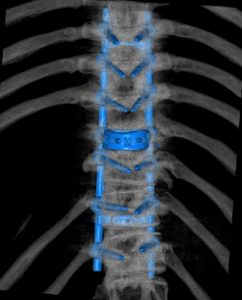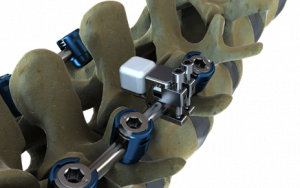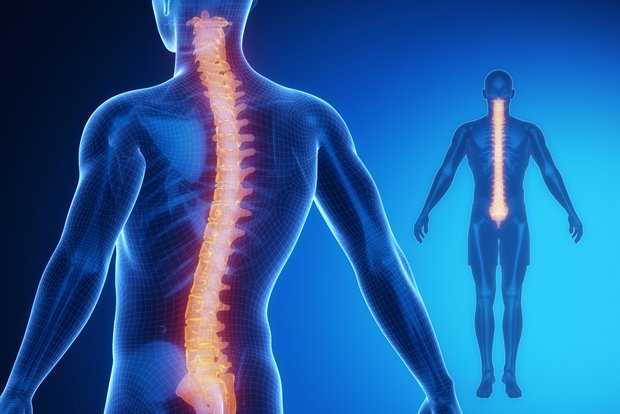A team of Australian researchers recently published a paper on a case involving a 72-year-old woman with sciatica and a complex L5–S1 pseudoarthrosis 12 months after L2–S1 fixation surgery for symptomatic degenerative scoliosis. The woman needed surgery to fix the complications she had developed, and the surgical team treated her using 3D printing from the beginning to the end of the procedure. You can access the paper, entitled “Designing patient-specific solutions using biomodelling and 3D-printing for revision lumbar spine surgery,” here.
CT data from patient scans was used to develop models of the bony lumbosacral spine for pre-operative planning, patient education, and reference during the procedure itself. The surgeon also worked with engineers to develop a patient-specific 3D printed titanium lumbrosacral fixation implant. 3D printing was also used to create a stereotactic drill guide.
At the patient’s six-month follow-up visit, the patient showed full resolution of symptoms, and radiography showed no evidence of implant dysfunction. These results mirror those of many other patients whose surgeries have been augmented by 3D printing, which is a sharp contrast to surgeries in which one-size-fits-all implants cause further pain and complications. The use of 3D printing enables surgeons to fix issues permanently, rather than requiring patients to come back a few years later for revisions, as is so often the case with many spinal surgeries.“Self-docking 3D-printed nylon tubular retractors specific to patient tissue depth and bony anatomy at L5–S1 were developed for a minimally invasive transforaminal approach,” the researchers add. “The pre-selected screws were separately sourced, bundled with the patient-specific devices, and supplied as a kit to the hospital before surgery.”
The use of 3D printing in spinal surgeries has not only saved people from further discomfort and revision surgeries but has actually saved lives – titanium implants have restored vertebrae and prevented paralysis and even death on more than one occasion. A catastrophic spinal condition, with the loss of vertebrae, sentenced people to a lifetime of disability not long ago, but 3D printing is allowing these people to walk again. The importance of the technology’s ability to create patient-specific implants cannot be overstated; surgeons can now effectively replicate parts of the human body.
We may not yet be able to 3D print transplantable human organs, but 3D printing has still come an incredibly long way in medicine, and spinal surgeries and implants are an excellent example of how technology can restore the body. In time, it’s possible that paralysis may become a rarity, even with severe spinal injuries and conditions. If parts of the spine can be replaced by implants, will we eventually be able to replace the entire spine, or close to it? The possibilities are exciting, but in the meantime, people with less severe spinal conditions are living their lives in much less pain thanks to 3D printing.
Authors of the paper include Ganesha K. Thayaparan, Mark G. Owbridge, Robert G. Thompson, and Paul S. D’Urso.
Discuss this and other 3D printing topics at 3DPrintBoard.com or share your thoughts below.
Subscribe to Our Email Newsletter
Stay up-to-date on all the latest news from the 3D printing industry and receive information and offers from third party vendors.
You May Also Like
NSF Awards Kentucky $1M for Advanced Manufacturing
The National Science Foundation has awarded a $1 million grant to the University of Louisville for the Advancing Manufacturing and Building Construction Technologies (NSF AMT) project. This initiative is part...
3D Printing News Briefs, May 11, 2024: 3D Printed Stent, Tower, Sculptures, & More
We’re starting off with medical research in today’s 3D Printing News Briefs, as researchers in Korea used CT images and 3D printing to fabricate an educational simulator for a mastoidectomy....
3D Printing Unpeeled: Wind Turbines, Probiotics and Lenses
TPI Composites, ORNL and Ingersoll Rand are working to make wind turbine tooling segments that can be 18.3 meters long. These elements also include resistive wires that help keep the...
Tethon 3D Releases Cost-effective Bioprinter
Tethon 3D, known for its ceramic-loaded DLP materials, custom resins, and DLP 3D printers, has recently released a bioprinter. Vat polymerization printers like DLP systems have been widely used by...



































